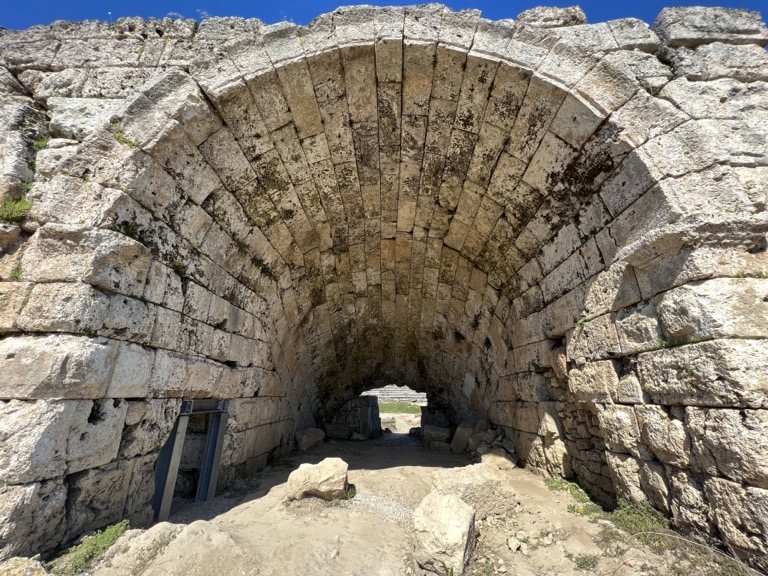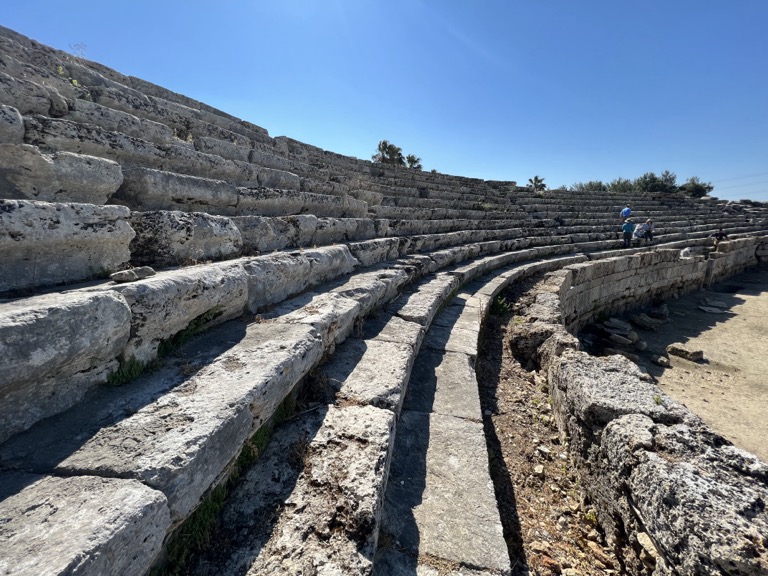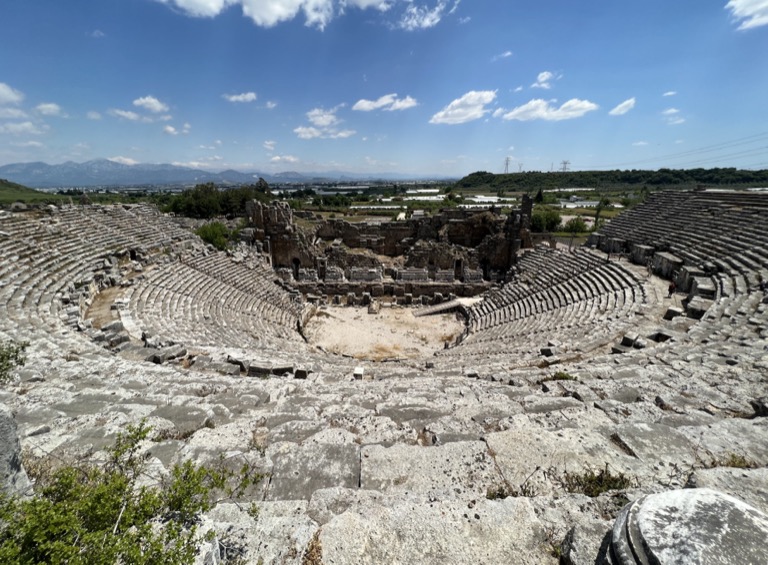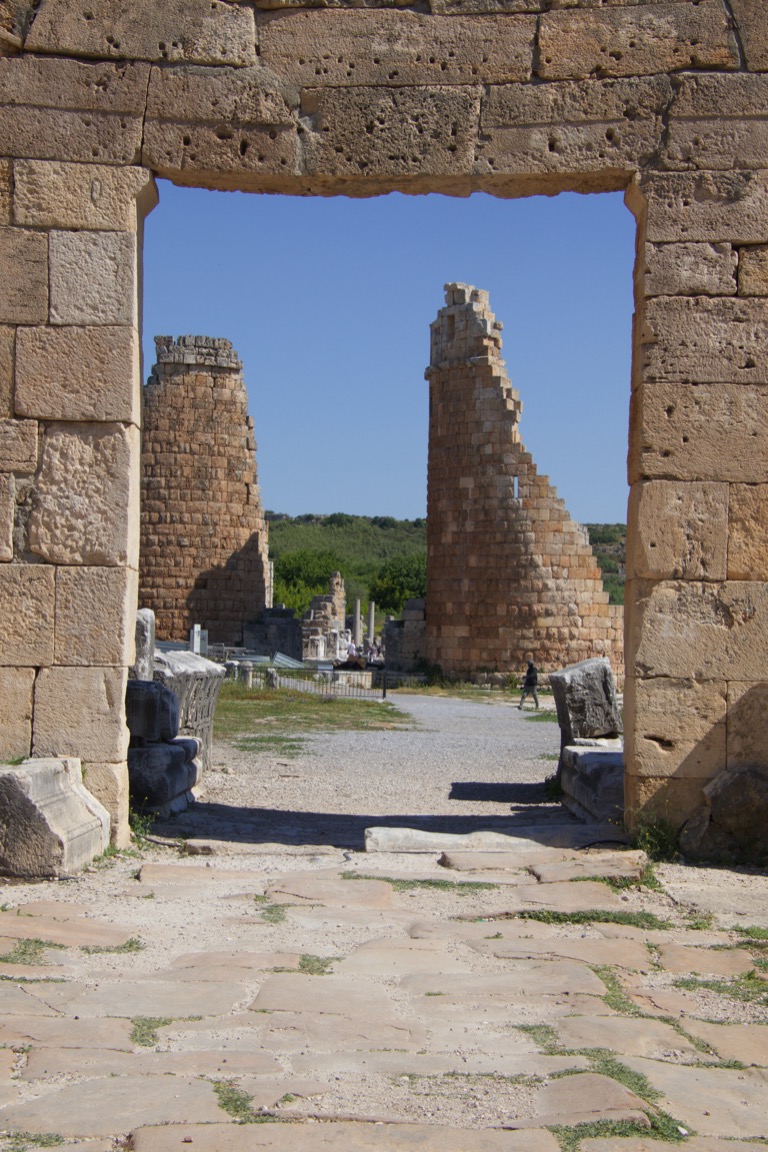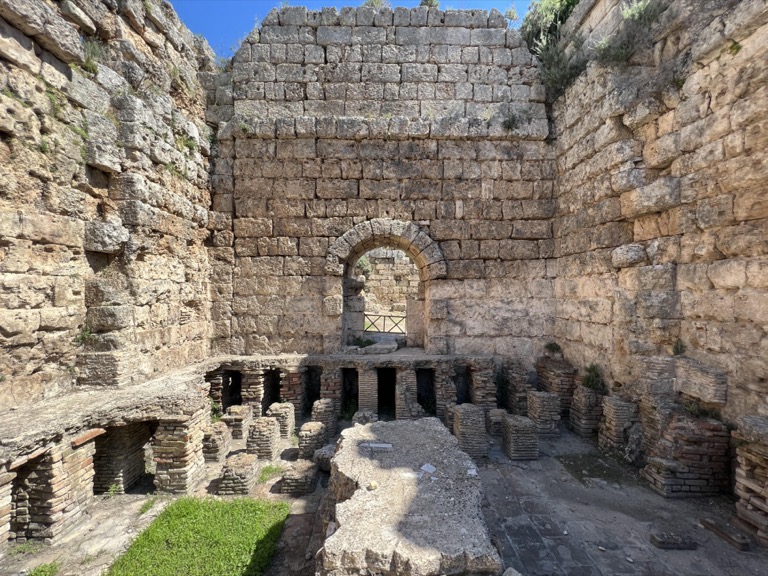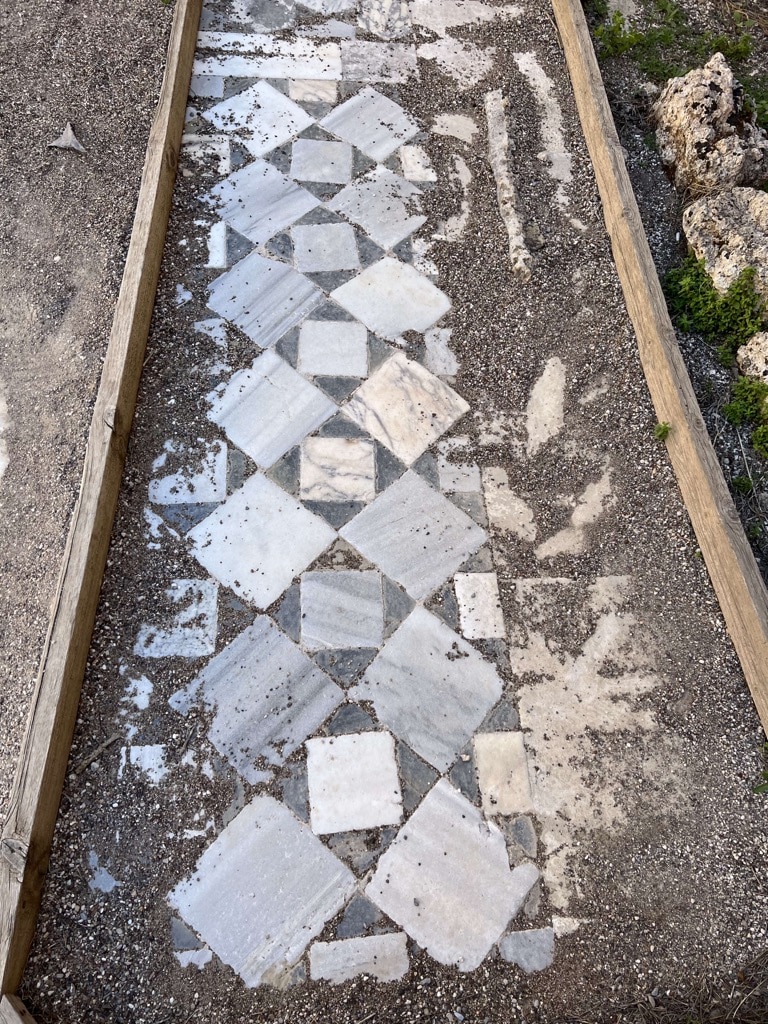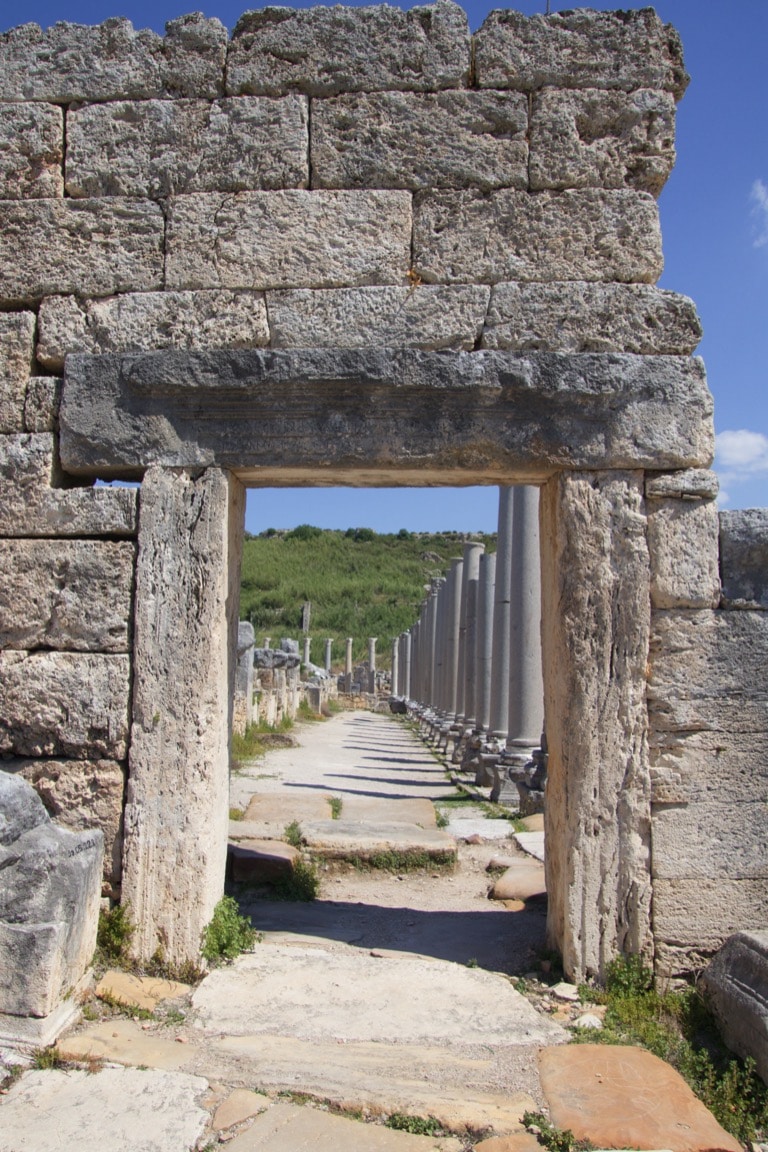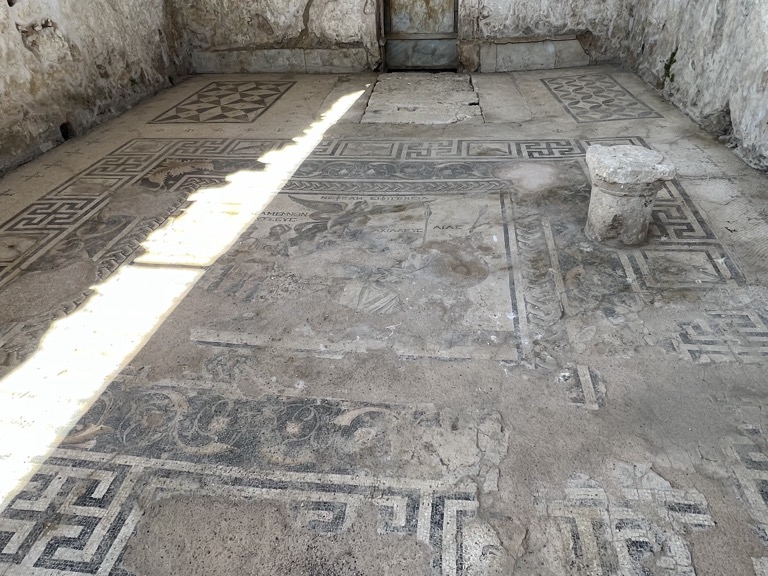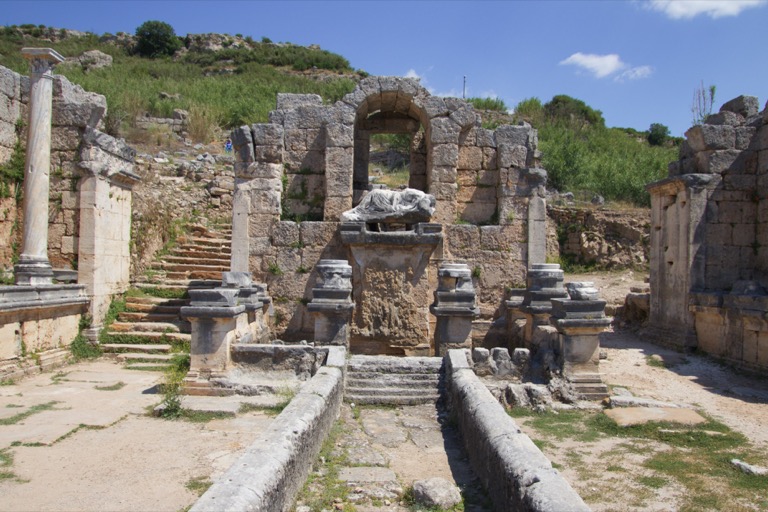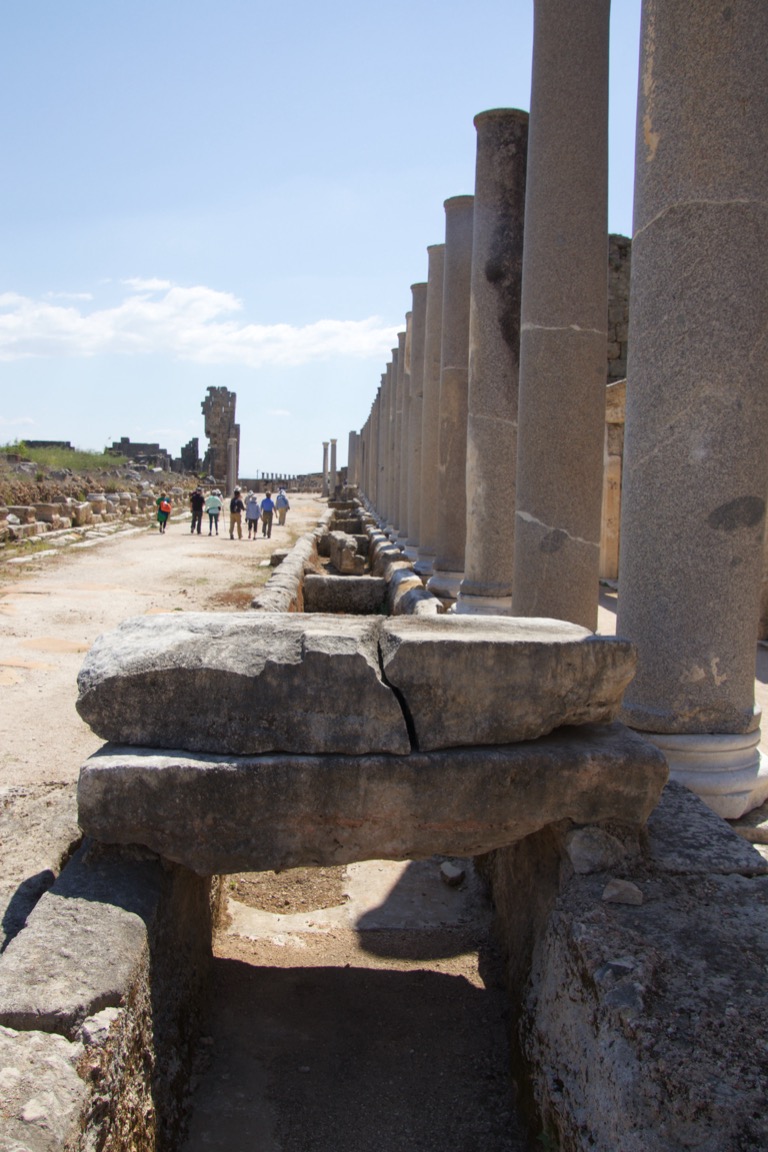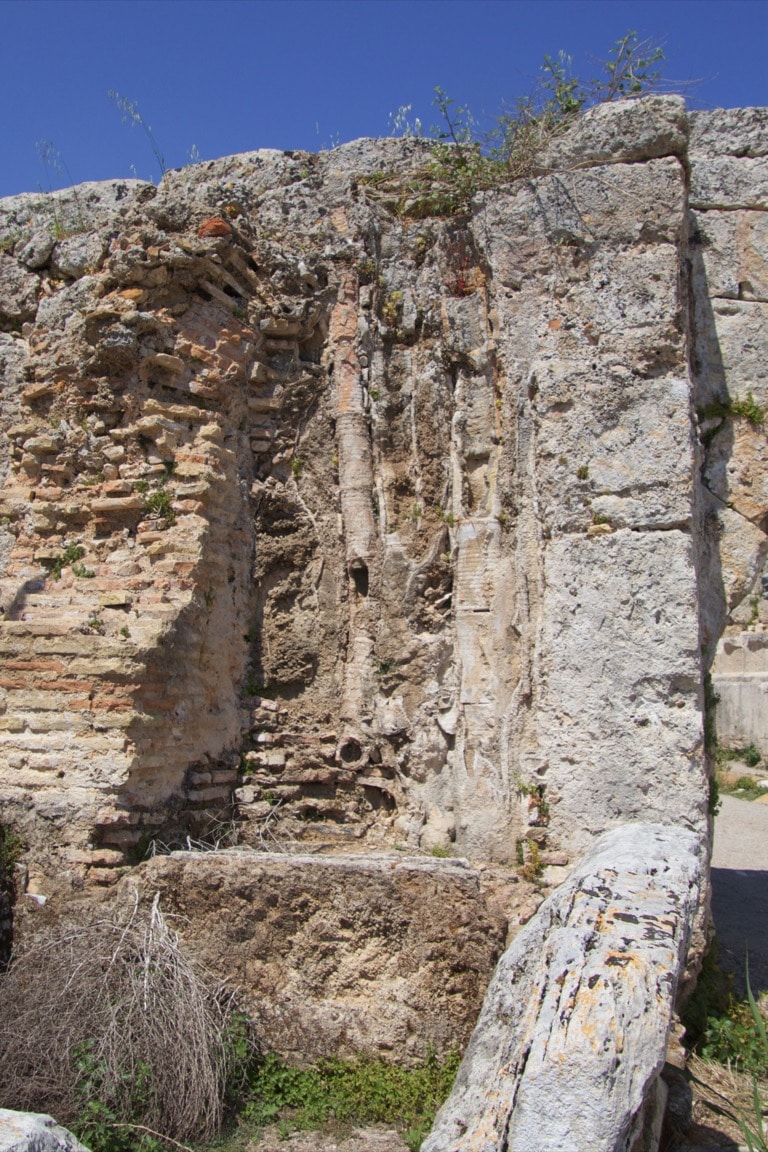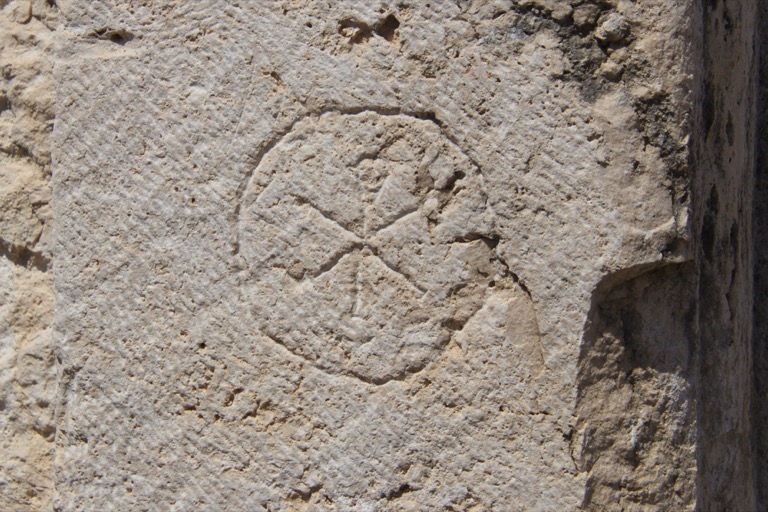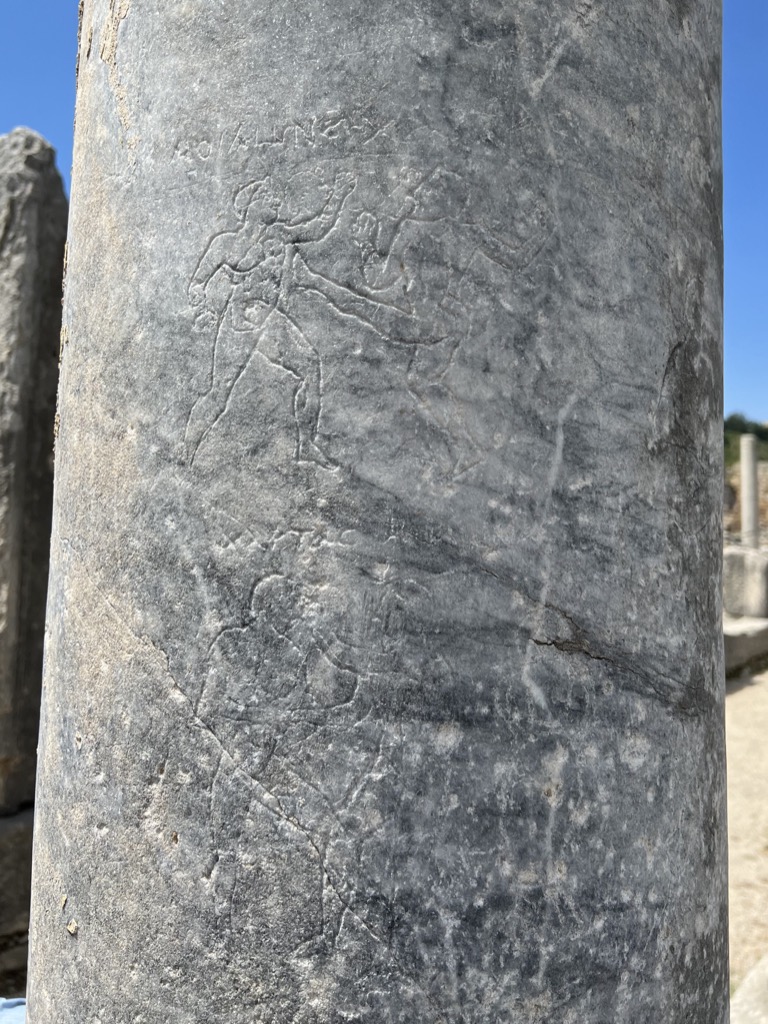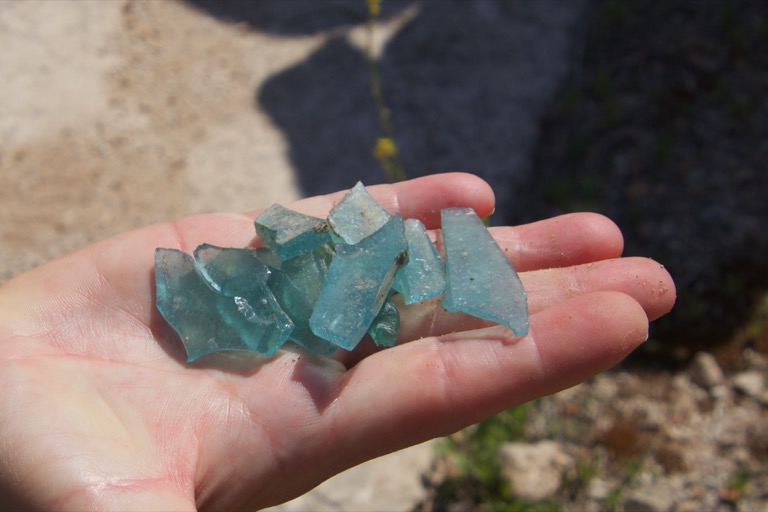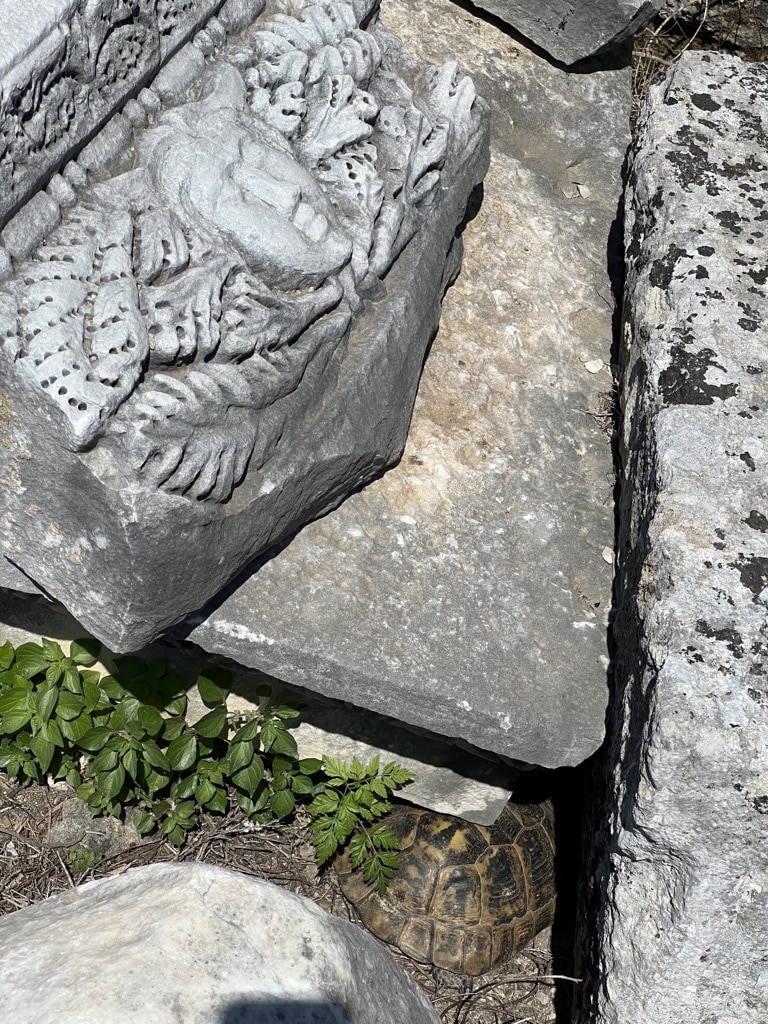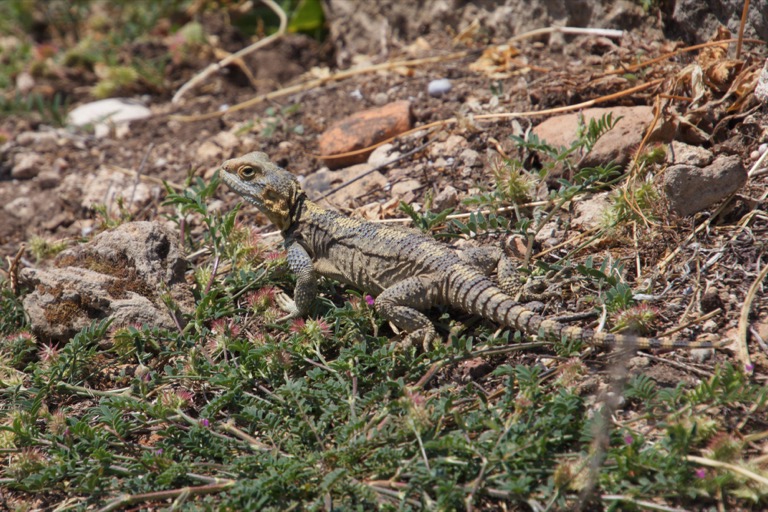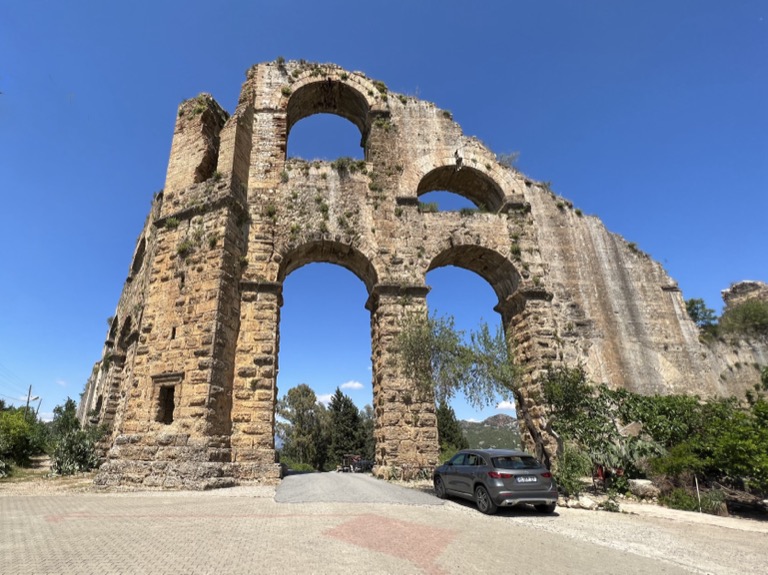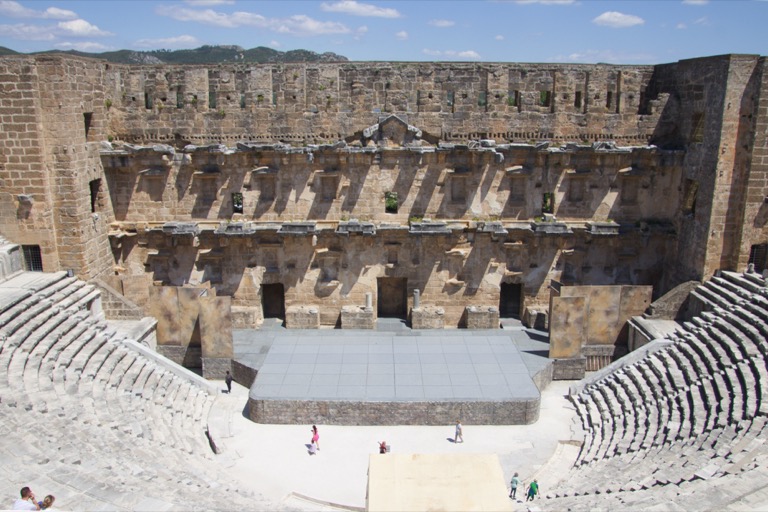on
Perge and Aspendos
Today we visit two ancient cities, Perge and Aspendos.
We started at Perge, which is a large city, but it’s not all excavated. It was likely founded in Hittite times, then expanded by the Greeks and then expanded again in Roman times. The main streets and some of the important buildings are excavated, but there are large areas that haven’t been excavated yet.
Outside the walled city is the Hippodrome, which could seat 30,000 people. Earthquakes have damaged many of the buildings, but parts of it are still standing. Think of it as a long stadium that is open on one end. There would have been chariot racing in it as well as wrestling in the enclosed end.
Here is an overview taken towards the theater and hippodrome. The building in the lower right is a church that is in an unexcavated part of the city. They’ve done enough survey work to know it’s a church.
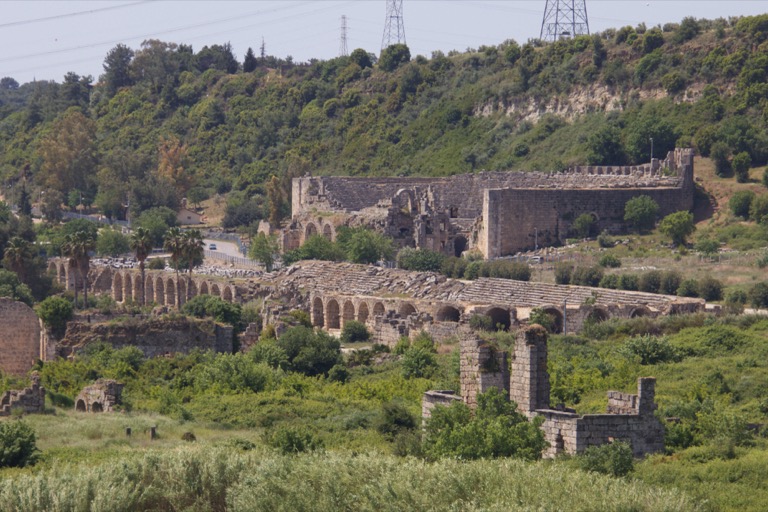
Theaters were important in Roman times. This theater could hold 11,000 people. It was outside the city walls as well.
The theater has a series of scenes in marble of the gods, these are the originals, they haven’t been sent off to a museum.
Here is the entrance to Perge. In Roman times, this first gate would have been covered in marble, the second gate visible through the gate is the gate in Hellenistic times.
Inside the newer Roman portion of the city, the Romans built their baths. The baths would have been lined with marble, but that is long gone.
Portions of the marble floor remains. Much of it is covered with felt and small gravel to protect it, but some is exposed, so you can see what it looked like.
Here is the promenade along the west side of the Main Street. It has mosaics all along it, but they are covered up to protect them.
They had one shop mosaic uncovered, but protected by a roof. The mosaic has a scene from the Trojan war.
At the north end of the Main Street is the Nemesis fountain. It was fed from a spring up the hill behind it. There was a four-foot wide canal down the middle of that Main Street leading away from the fountain. This made it easy for folks to get water in the city.
Here is the canal along the one side of the cross road through the city. They had small bridges over these canals at intervals, so you could cross from one side to the other.
Here are some clay pipes that come down from the aqueduct that crossed the crossroad through town. The pipes dumped into the canal on the cross road.
Here is a Christian symbol carved into the post of a shop on the cross road. That probably marked the shopkeeper as a Christian.
On the columns around the Agora, there are graffiti carvings. Many show support for favorite fighters in the hippodrome. Here is one example.
We saw some Roman period broken glass on the cross road. Even though this part has been excavated, small things like this will still be found. We left it on top of a column base nearby.
Here is a greek tortoise hiding under some marble pieces near the entrance. It’s been ruins for a long time and the animals have made it their home.
Here is a roughtail rock agama, a local lizard. I saw it when I went up the hill behind the fountain to the overview over the city.
There is also a Roman aquaduct that feeds the nearby city of Aspendos.
We stopped in Aspendos to see the theater. It was well-preserved, as it was used as a caravansarai starting in the 1200s, and the Ottomans maintained the outer walls. They continue to maintain it and hold concerts in it now. Our guide and some of the travelers did some singing in the theater as it was designed to carry voices.
